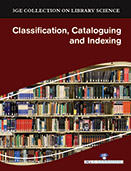Library Science

Cataloguing and classification is simply a way of organizing library materials in such a way that the retrieval will not be difficult for library users. Cataloging has a rich history of practice, which can provide valuable lessons for many of today's information workers, from metadata specialists to reference librarians. A basic understanding of cataloging is highly beneficial for library employees, library users wishing to improve their catalog searching skills, and anybody interested in metadata.
Classification, Cataloguing and Indexing aims to provide a practical and engaging introduction to Cataloging and Classification, with numerous examples. Therefore, there is strong need to organize library collections for easy access for users because if the collections are not organized the collections will be useless. Classification provides a means of bringing all books on the same subject together in a place. Therefore cataloguing and classification can be described as the index to all library collections. Cataloguing and Classification make retrieval of library materials easy for users.
At one time, cataloguing and classification were done manually which made the work very challenging, tedious and time consuming. Now, most University libraries have their counterparts in advanced countries in the use of computers for processing library collections. The use of computerized cataloguing and classification has made processing of library collections more accurate, interesting and faster. Cataloguing involves three major steps which are: allocating access points, subject headings and classification numbers.
The book explains the challenges faced by cataloguers in this age of Information explosion and Information Communication Technology (ICT) and the attendant innovations and trends that are required to cope in this new environment. Cataloguing is not just building a catalogue, but about providing users with timely access to information relevant to their needs. The task of identifying resources collected by libraries, results in rich metadata that can be used for many purposes. This book is the standard text for the teaching and understanding of cataloging and classification. Library school students specializing in cataloging and classification will also find this book an indispensable guide as they prepare themselves for employment in the field. This is the resource everyone can use to keep their cataloging and classification skills sharp.